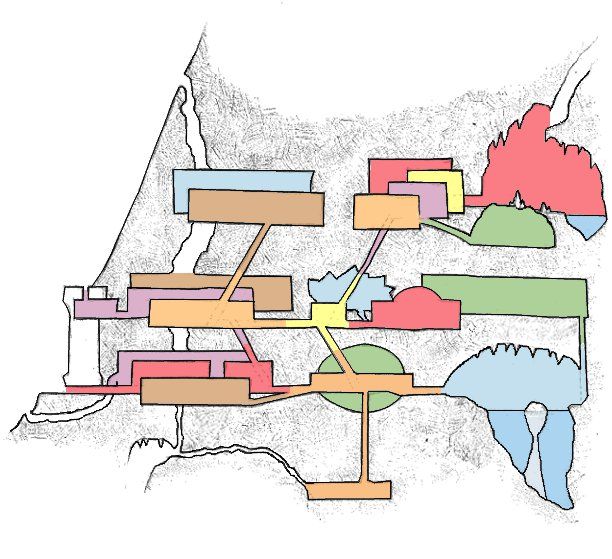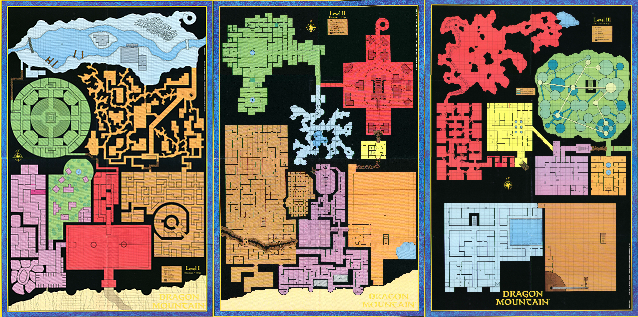Quickleaf
Legend
I've made significant progress on the conversion since ENWorld was down...
With the whole "abducted by kobolds" thing, I'm leaning toward running it as a fight with kobolds using subdual tactics and KO poison.
With the "separated from party" issue, I agree that it can be done. It's seems like [MENTION=42582]pemerton[/MENTION] and [MENTION=6696971]Manbearcat[/MENTION] , you guys were saying the DM needs to telegraph his punches a bit when it comes to separating the party? So it's not "save or separate", but "save...and then separate".
I've also worked up an elevation-view map in old school style to organize the various levels and areas ...

Compare this to the plan-view maps from the original module...

It's already a fairly non-linear dungeon. The only major changes I made are extending the chasm upward into another possible entrance (500-ft of spelunking madness!), and giving the dragon a secret route out. Thinking on it again, the dragon has an underwater escape route in the original module so perhaps this "flight path" is unnecessary.
EDIT: Tried uploading PDF attachment, but that doesn't seem to be working.
With the whole "abducted by kobolds" thing, I'm leaning toward running it as a fight with kobolds using subdual tactics and KO poison.
With the "separated from party" issue, I agree that it can be done. It's seems like [MENTION=42582]pemerton[/MENTION] and [MENTION=6696971]Manbearcat[/MENTION] , you guys were saying the DM needs to telegraph his punches a bit when it comes to separating the party? So it's not "save or separate", but "save...and then separate".
I've also worked up an elevation-view map in old school style to organize the various levels and areas ...

Compare this to the plan-view maps from the original module...

It's already a fairly non-linear dungeon. The only major changes I made are extending the chasm upward into another possible entrance (500-ft of spelunking madness!), and giving the dragon a secret route out. Thinking on it again, the dragon has an underwater escape route in the original module so perhaps this "flight path" is unnecessary.
EDIT: Tried uploading PDF attachment, but that doesn't seem to be working.
Last edited:



